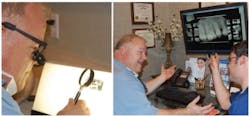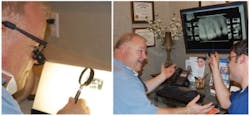Digital X-ray technology - an owner's perspective
Terry L. Myers, DDS, FAGD
For more on this topic, go to www.dentaleconomics.com and search using the following key words: dental technology, digital imaging, X-ray, dental radiography, diagnosis, Dr. Terry L. Myers.
In 2006, 735 Dental Economics® subscribers were polled about various aspects of dental practice, including their aspirations for new technology. Dentists rated radiography equipment as the highest priority in the basic equipment investment technology category. At the time, 29% of the respondents were planning to add a digital system in the next two years, and a surprising 41% responded that they had already implemented a digital radiography system.
Since that time, other surveys have echoed these statistics, with technology taking an even more important role in the dental practice. Additionally, research and development in digital radiography continues to make this a technology that counts both clinically and financially. In the past, I have been an outspoken advocate for imaging, but with so many dentists yet to adopt the digital-office lifestyle, it's worth sharing again.
While every office has its own priorities, these are the top three benefits of digital X-ray technology that have enriched life around the office for me, my staff, and my patients.
More than meets the eye » Digital X-rays are as clear and detailed as any conventional film, and the digital format offers choices. There's really not much chance for education to occur with a 1" by 1½" piece of film. However, education with digital X-rays is phenomenal. Images are the size of the computer monitor. If I want to see different perspectives, I can magnify, zoom in, change color and contrast, draw on, and point out my concerns with a mouse click until I am absolutely sure that the patient sees the situation from my viewpoint and is confident in my assessment. Innovations in digital technology just keep getting better. Images taken with the DEXIS Platinum sensor that I recently obtained combine all sorts of technology to bring out clarity in even hard-to-see details.
More time for patients » Digital X-rays are faster than film. For example, my system can capture vertical or horizontal bitewings and periapicals with a single sensor – without changing film or sensors. My assistant can take an FMX in about five minutes. When my assistants are on the move, the sensor moves with them; the direct USB connection allows quick and easy transport between treatment rooms. With digital X-rays literally at my fingertips from any office computer or even from home, I can securely pull up images and records for an informed decision. Try doing that with film.
It's just more practical » With all the attributes of digital radiography, clinicians often forget the more practical side of producing X-rays – the equipment that produces the X-rays. The processor is a high-maintenance piece of equipment. Mechanical parts break down or start slipping, and then it has to be sent out for repair, so you have to get a spare or a loaner. Besides, it is not practical for assistants to spend time developing film or cleaning the processor when they could be caring for patients.
While these are my top three benefits, digital radiography also brings a sense of cohesiveness to all of the office processes. When integrated with a digital practice-management system, digital image files can be stored with treatment notes and records, appointments, and insurance information – all in one organized, uncluttered space.
While technology can touch every aspect of the office these days, keep in mind that the X-ray is the first image that patients see, and as such can establish your image as a technology-savvy dentist.
Dr. Terry L. Myers is a fellow in the Academy of General Dentistry and a member of the Academy of Cosmetic Dentistry and the Dental Sleep Disorder Society. He has a private practice in Belton, Mo. You may contact Dr. Myers at [email protected].

